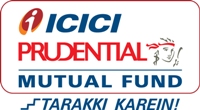How to select mutual funds based on your investment needs: Part 1

Mutual funds are wonderful investment options that address a wide variety of financial needs and goals. You can invest the idle cash in your savings bank account in liquid mutual funds and earn a higher return than your savings bank while at the same time have the flexibility of liquidating it at any time to meet your needs. You can invest in mutual funds to earn short term higher yields than fixed deposits. Mutual funds can help you plan for your longer time investment goals, like purchasing a house, your children’s education, their marriage and also your retirement. Even after your retirement, mutual funds can help you meet your post retirement income needs and beat inflation. Finally, mutual funds can help you to reduce your tax liability every year.
There are also mutual fund products that are customized for specific financial goals like your children’s education, marriage, retirement planning etc. There are mutual fund products that are customized to balance your risk profile and asset allocation on an ongoing basis, as your progress through. Mutual funds can also help investors seeking exposure to a wider variety of asset classes like gold, international equity markets etc.
Mutual funds also cater to a wide spectrum of risk appetites. There is a perception among many retail investors that mutual funds are risky. Perhaps the statutory disclosure that, mutual funds are subject to market risks serves to strengthen this perception. The notion of risk is related to two basic investment aspects, safety of capital and return expectation. While a few mutual fund products assure capital safety, the vast majority of mutual funds do not assure capital safety and no mutual fund product assures a particular return. Therefore, there is no denying that there is an element of risk involved in mutual fund investments. However, a broader understanding of risk also involves evaluation of the investment objectives, investment horizon and a certain tolerance band of risk. For example, long term income funds may give negative returns for 3 – 4 months, but over the last 10 years long term income funds have given negative returns in only one year. Therefore, if an investor has a horizon of three years for investment in a long term income funds, chances of negative returns are very low. Volatility is a short term phenomenon. Some readers may think income funds are less risky, but what about the risky equity funds? Let us take large cap equity funds. In the last one year large cap funds on an average gave negative returns, but over the 5 years, even the worst performing large cap fund gave positive returns. Investors should understand that risk is not binary in nature and the degree of risk is invariably related to the investment horizon.
In this two part blog, we will discuss how to select mutual funds based on your different investment needs. We get a large number of queries on advisorkhoj.com if a particular mutual fund scheme or set of schemes will give the best results towards the financial goals of the investor. While scheme selection is important, the first step to building your mutual fund investment portfolio is to clearly define your investment goals. For each investment goal you should identify the following:-
Investment objective:
Capital appreciation or income generation or tax saving or some combination of these three. Mutual funds offer products that help meet one or more of the investment objectives. For example, diversified equity funds help investors meet capital appreciation goals. Debt funds or income funds can help investors meet income needs. Equity Linked Savings Schemes can help investors save taxes under Section 80C of Income tax Act and also help in capital appreciation. Hybrid funds can enable investors to meet their income needs and also help them grow their capital.Investment horizon:
Is your investment goal short term, medium term or long term? You should define your investment horizon in months or years, depending on the investment goals. Liquid funds and ultra short term debt funds are great options for investors wanting to park their money for less than a year. Short term and medium term debt funds are good investment options for a one to three year investment horizon. For investment periods of over 3 years, investors can opt for long term income funds, hybrid funds and equity funds depending on their investment goals.Risk tolerance:
Risk and return are directly related. If your objective is capital appreciation then your risk tolerance should be high. Usually, if you have a long investment horizon then you can afford to take risks. However, risk tolerance is also related to your investment temperament. We are all humans and each of us is different from one another. Some investors may want capital appreciation and have a long investment horizon but may not have appetite for lot of volatility. Fortunately, mutual funds offer solutions for such investors too. Sometimes an investor may have different risk tolerance towards two different investment goals, even though both goals are similar in nature from an investment objective and horizon perspective. For example, a friend told me that he had a fairly high risk tolerance for his retirement planning investment, but a lower risk tolerance for his daughter’s higher education investment. For his retirement planning he preferred to invest in diversified equity funds, while for his daughter’s education he preferred to invest in hybrid large cap equity oriented balanced funds. As discussed earlier, mutual funds offer solutions for a variety of investment preferences.Investment management style:
Each one of us has different investment management styles. Some investors want to be actively involved with their investment portfolio management. Other investor may have a more passive style. Some investors actively follow equity markets. These investors often take advantage of deep corrections in the market to tactically increase asset allocation in equities by investing in lump sum. Passive investors should invest through systematic investment plans. Passive investors should also avoid sector funds, because these involve an element of timing your entry and exit from these schemes. On the other hand well informed active investors can take advantage of market opportunities to get excellent returns from sector funds. Asset allocation is critical success factor for meeting your investment goals. Some active investors want to manage their asset allocation by investing in a portfolio of equity and debt funds. Investors, who are less active, can manage their asset allocation by investing in hybrid equity oriented or debt oriented funds. Asset allocation also changes as we progress through life. At a young age maximum allocation should be in equities, but as we progress through life equity and debt allocations should get balanced and after retirement maximum allocation should be in debt. Active investors can rebalance their asset allocation on an ongoing basis, by rebalancing from time to time. However, investors can also take advantage of life stage funds which keep on re-balancing their asset allocation after fixed intervals of time to maintain the optimal allocation depending on the age of the investor. Finally, less active investors can opt for customized solutions like child plans and retirement plans, which can help them to fly on auto-pilot and meet their investment goals. Again, what we are trying to stress is that mutual funds offer a plethora of solutions that suit various investment management styles.Liquidity:
Liquidity refers to the flexibility of being able to redeem your investments partially or fully to meet any emergency cash needs. Sometimes it may also refer to the ability of meeting your emergency needs without incurring significant losses. Your liquidity needs from an investment will depend on an evaluation of your income and expense situation, your asset liability situation and the liquidity position of your overall asset portfolio, including how much liquid assets your have like savings bank balance, liquid fund investments etc. Some mutual fund schemes offer more liquidity than others with respect to redemptions, e.g. open ended funds are more liquid than close ended funds. Further exit loads for early redemptions also differ from scheme to scheme. Some schemes do not have exit loads, while others may have exit loads for redemptions within 3 months, 6 months, 1 year, 18 months etc. Some mutual fund schemes have exit loads depending on goal related criteria. For example, some retirement plans have exit loads if redeemed before the age of 60. Some child plans have very high exit loads if redeemed early.
Conclusion
Once you have identified the investment objective, horizon, risk tolerance, investment style and liquidity requirements for each investment goal, you should then identify the suitable mutual fund category that will meet these investment considerations. Though we have shared some examples in this blog, we will discuss in more details how to construct your mutual fund portfolio based on these considerations in the second part of this blog.
RECOMMENDED READS
LATEST ARTICLES
- Why you need to have hybrid mutual funds in your portfolio: Different types of funds Part 2
- Why you need to have hybrid mutual funds in your portfolio: Misconceptions Part 1
- Which is the best time to invest in mutual funds
- Economic slowdown: Is it real and what should you do
- Importance of liquidity in investing: Mutual funds are ideal solutions
An Investor Education Initiative by ICICI Prudential Mutual Fund to help you make informed investment decisions.
Quick Links
Follow ICICI Pru MF
More About ICICI Pru MF
POST A QUERY




